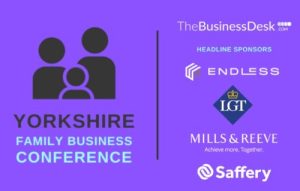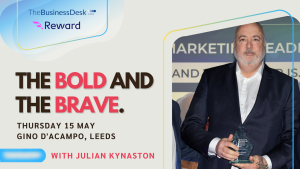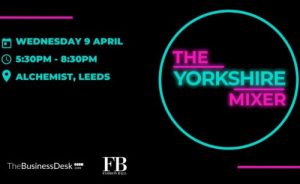The challenges and opportunities of AI implementation

Saile Villegas, founder of Leeds large language model AI specialist SeeAI, is one of the expert speakers at TheBusinessDesk.com’s Disruptors conference on 30 November.
As the firm works on its own product, it has been working as a consultancy for other companies keen to implement AI technology.
“The main challenge people face is resistance from the team,” she said. “I think it’s very human to not want to change the way we do things. It’s not about age or your job position. It goes beyond jobs or industries. There is always resistance.”
Overcoming that resistance depends on clear communication and a planned approach, she said.
“It needs to go in layers. It starts by identifying the opportunity for disruption. Within the organisation there are some processes that could be more efficient. If you’re searching for data manually, you’re having a look at texts and summarizing, if you have to create content for social media, these things can be automated – not the whole job, because it’s still important to have the human element.
“And you need to be able to make sure it aligns with your values, aligns with your brand, and has a personal touch. As good as these models are, we need to understand they’re not human.
“It can automate maybe 80%, 90% of that class. If you identify that and make the process much faster you allow those creative people – and other people – to really use their talents in that area.
“So you identify the process, and then you identify how, by implementing, this disruption can help the company achieve its long-term vision.”
In addition, she said, there were regulatory, technical and budgetary constraints – and for her own team, the challenge of keeping up to date with the latest trends in a fast-moving field.
“We don’t have this resistance to change – that would be bad because we’re a tech company. But we do have the challenge of speed. We need to move really quickly. Every day there’s something new and you need to be on constant look-out for these things, and you need to be able to determine what’s good and what’s not good.”
Part of that skill, she said, was identifying which new developments were genuine trends and which were simply fads.
“A trend has underlying value, and there’s a clear path of integration and adoption into existing pipelines or systems. A fad is just something that’s exciting but there’s no clear or long-term applicability.”
Large-language models, such as ChatGPT, have been evolving for many years, she said, but “the difference is that for the first time they’re available for everyone. People need to be able to understand them and be able to get used to interacting with them. And they need that feedback to evolve quickly.”
To integrate such models into the business environment, they must have a business value, she said. “This is where we come in. We help companies integrate it into their business processes. It goes beyond chat. It’s actually about knowing how to use them – and when to use them, whether they’re necessary.
“And you have to understand what they are capable of at the moment – I think they could do, right quickly, about 80% to 90% of the tasks you want. But to get that extra 10% you have to spend a lot of money, a lot of time.
“So you need to understand what the limitations are. This is, I think, what people need to play around with, to understand those limitations.”
The free, one-day Disruptors conference, sponsored by Clarion, BHP and SPG, will take place at the Nexus, Leeds, from 9am to 3.45pm on Thursday 30 November.
You can register for your free place, and get details of the agenda and speakers, at the dedicated conference website.









